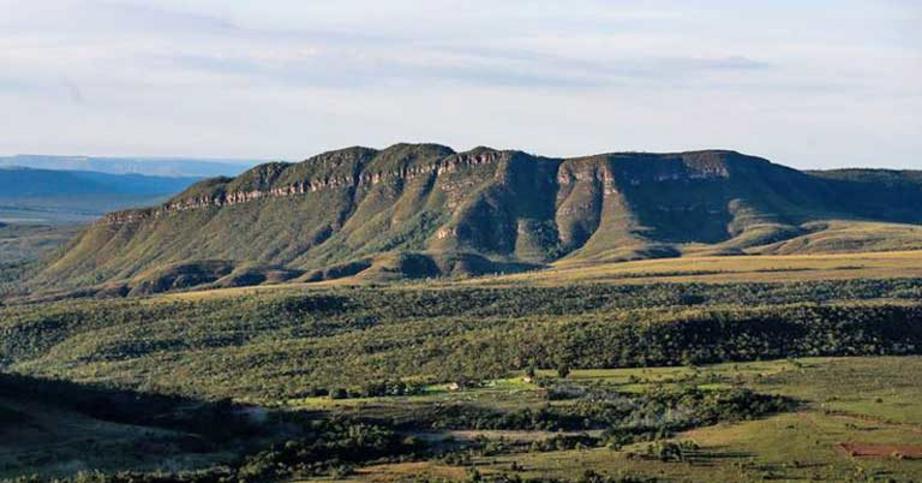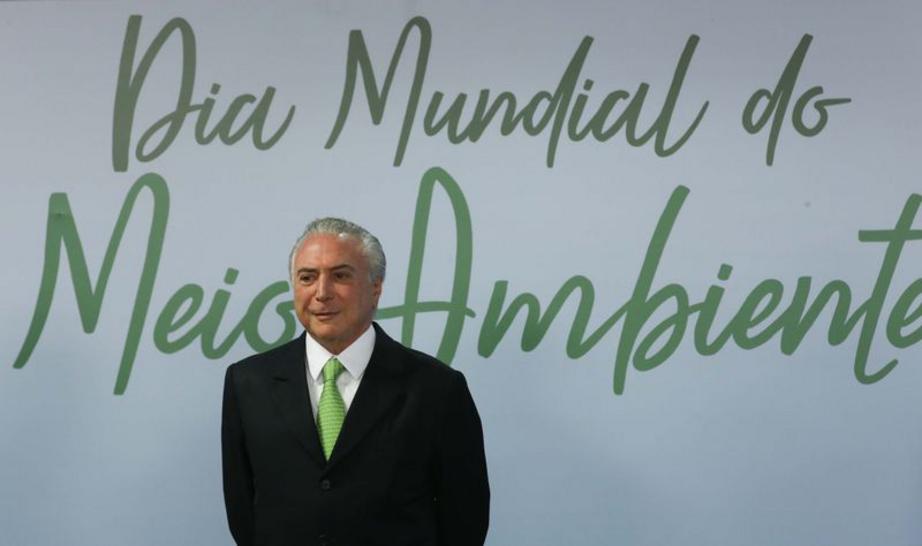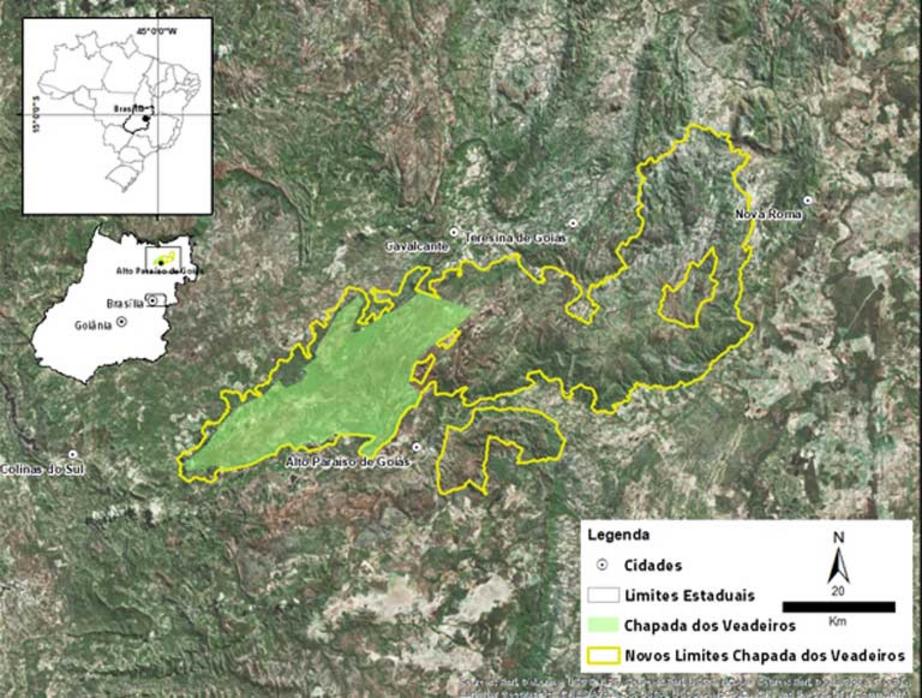In rare move, Brazil’s Temer ups conserved lands by 282,000 hectares
Brazil expands Chapada dos Veadeiros National Park, Goiás; Taim Ecological Station, Rio Grande do Sul; and Biological Reservation Union, Rio de Janeiro; creates Ferruginous Fields National Park, Pará.
- President Temer announced the expansion of Chapada dos Veadeiros National Park, Goiás; the Taim Ecological Station, Rio Grande do Sul; and the Biological Reservation Union, in Rio de Janeiro; along with the creation of Ferruginous Fields National Park, Pará — increasing conserved lands by more than 282,000 hectares.
- Chapada dos Veadeiros National Park sees the biggest expansion, increasing from 65,000 hectares (251 square miles) to 240,000 hectares (927 square miles). Its protection is seen as vital to the preservation of biodiversity in the Cerrado, where only 3 percent of land is federally protected.
- The protection of 282,000 hectares comes as Temer and Congress finalize plans to reduce the National Park of Jamanxim and National Forest of Jamanxim by 587,000 hectares (2,266 square miles) — an Amazon land deal criticized by conservationists and expected to benefit the agribusiness lobby that helped put Temer in power.

Chapada dos Veadeiros National Park in December 2016. The expanded park will protect unique upland Cerrado flora and fauna. Photo by Marcelo Camargo / Agência Brasil
In the midst of a delicate political moment, Brazilian president Michel Temer signed a decree last Monday, on World Environment Day, expanding three federally protected parks, and creating a new one — the Ferruginous Fields National Park, in Pará state.
Conservation gains total 282,000 hectares (1,089 square miles) for Chapada dos Veadeiros National Park, in Goiás state; the Taim Ecological Station, located on the coast of Rio Grande do Sul; and the Biological Reservation Union, in Rio de Janeiro.
“The adopted measures reveal that our government holds fiscal, social and environmental responsibilities as part of its values,” said Temer during a ceremony at the Planalto Palace in Brasilia. “We even increased the forest concessions [slated] for sustainable management and partnered with the private sector to promote tourism in these areas.”
Applause by conservationists for the enlarged public lands is likely to be tempered by two provisional measures forwarded by Temer (MP756 and MP758) and passed by Congress in May to reduce the National Park of Jamanxim and National Forest of Jamanxim by 587,000 hectares (2,266 square miles) — an Amazon land deal expected to benefit the bancada ruralista agribusiness lobby that helped put Temer in power. The President has yet to make a final decision on these park reductions.

President Michel Temer during a ceremony in celebration of World Environment Day, in Brasília, June 5, 2017. Photo by Antônio Cruz courtesy of Agência Brasil
Conservation gains for the Cerrado
Chapada dos Veadeiros National Park will see the biggest expansion according to Temer’s declaration, increasing from 65,000 hectares (251 square miles) to 240,000 hectares (927 square miles). This represents a positive historical reversal for the park; it was created in 1961 with 625,000 hectares (2,413 square miles), but suffered successive reductions over the decades.
The national park’s enlargement comes at an opportune time: The Cerrado where it is located is one of the most threatened Brazilian biomes, with the least federally protected land — only about 3 percent.
“It is an achievement that must be celebrated in the face of the numerous proposals to reduce the country’s biodiversity today,” said Mariana Napolitano, WWF-Brazil sciences coordinator, to Mongabay.
The park’s expansion comes after considerable work. “It was a five-year negotiation between different spheres of government, including the Public Ministry’s office, as well as representatives of civil society and agribusiness entities,” revealed Napolitano. In December, WWF-Brazil started a campaign with the Pro-Conservation Unit Coalition for the immediate expansion of the park. A petition with 7,000 signatures was delivered to president Temer last week, just before his decision to approve the expansion.

Map showing the current size, and the expansion of Chapada dos Veadeiros National Park. Graphic courtesy of WWF-Brazil
While the final decision belonged with the federal government, state endorsement was required too. And at first, Goiás resisted, wanting only 90,000 hectares (347 square miles) to be added to the park. “It was a very fragmented proposal; the park would have [had] a discontinuous design, with holes and patches,” said Napolitano. “The state’s idea didn’t make ecological sense and would [have resulted in] difficulties for the conservation of the biome.”
The unit’s new configuration, as approved by Temer, will be for a continuous 222,000 hectares (857 square miles), which includes the previous area enclosed by the park, as well as a smaller piece of 18,000 hectares (69 square miles) in the Monkey River region. Both are divided by the BR-239 highway.
The new territories of the Chapada dos Veadeiros National Park have no agribusiness potential, and so their preservation was not seriously resisted by the agribusiness lobby which holds strong sway over the Temer government. “There was more interest from the real estate sector; residents of Brasília [143 miles away] wanted to build vacation homes in the region,” said the WWF-Brazil coordinator.
The park expansion is expected to not only help protect the Cerrado, but to also offer a boost to the local economy via tourism — Veadeiros saw 60,000 visitors in 2016, and is one of the most visited parks in Goiás. The area is home to endangered species, such as the Near Threatened jaguar (Panthera onca) and Critically Endangered Brazilian merganser (Mergus octosetaceus); it’s also an important water source with hundreds of springs and rivers.

A glittering-bellied emerald hummingbird (Chlorostilbon lucidus) near the Taim Ecological Station. Photo by Scheridon licensed under the Creative Commons Attribution-Share Alike 3.0 Unported license
More protected lands
Created in 1979, the coastal Taim Ecological Station, on the border with Uruguay, will be expanded by 22,000 hectares (85 square miles), and grow to 32,700 hectares (126 square miles) in total. The preserve is an important stopover for migratory birds traveling between the Northern Hemisphere and Patagonia.
In Rio de Janeiro, the Biological Reservation Union, established in 1998, had its area increased from 2,500 hectares (9.6 square miles) to 8,600 hectares (33 square miles). The preserve includes small remnants of the Atlantic Forest, home to the endangered golden lion tamarin (Leontopithecus rosalia), but the park is far from pristine; It is crossed by the BR-101 highway, a railroad and Petrobras pipelines.
The new Ferruginous Fields National Park, in Pará state, was born last Monday with 79,029 hectares (305 square miles) in the municipalities of Parauapebas and Canaã dos Carajás. The region possesses one of the largest mineral reserves on the planet and the park is covered by forest and savanna. The creation and protection of the park will be supported by the Vale mining company, which operates in the area.
At his World Environment Day presentation, President Temer also signed a resolution affirming the Paris Climate Agreement as now being part of the rule of law in Brazil. According to the Ministry of Environment, the Brazilian government is working, with the possibility of concluding this year, an initial draft of its national implementation and financing strategy for the Paris Agreement.

A Golden lion tamarin (Leontopithecus rosalia). Photo by su neko under the Creative Commons Attribution 2.0 Generic license
For the rest of this article please go to source link below.
